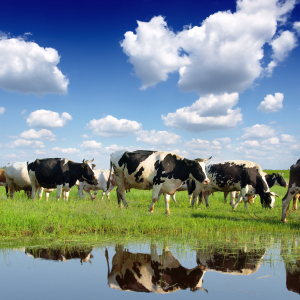There’s pretty clear evidence that the wealthier people are, they demand a cleaner environment. This plays out internationally for sure, but also here in the US, where wealthier states tend to spend more on the environment. Sure, Rachel Carson, the Cuyahoga River, and Love Canal had a big impact on our national psyche, but the reality is that we only addressed our pollution problems when we got rich enough to do so. So as time marches on, we in the US will just keep demanding a better environment.
But will we get a better environment? Only by luck. Our environmental rules and regulations have become so bogged down in bureaucracy and entrenched interests that we are wasting enormous resources trying to solve problems that should cost us much less. It needn’t be this way.
Consider the example of the city of Toledo, Ohio, which over the summer had to warn its residents not to use city water. This problem went far beyond the typical boil alert. In this case, residents were told not only that they could not drink the water, but they were not supposed to use it in any way. Tests had revealed the presence of algae that is potentially harmful for humans to even contact. Imagine living in a place where contamination is so bad you cannot even take a bath. Sounds like a different country, doesn’t it?
They key pollutant causing this problem is phosphorus, attributed heavily to runoff from farming operations. Unfortunately, this problem was aided by government. For years, taxpayers have invested significantly in efforts to reduce the environmental impacts of farming. Payments rose steadily from the 1980s to the present. National total expenditures for environmental improvements on farms now are above $5 billion per year, or $16 per acre of cropland. Even as these payments increased over the past two decades, water pollution problems worsened. It would be convenient to blame people who live in cities, but cities and factories have made dramatic and verifiable reductions in their phosphorus emissions.
So why are our large, publicly funded investments in reducing pollution from farming not paying off? The reasons are not that difficult to figure out. First, government has to spread the money out across lots of farmers, lest anyone complain about access. There is very little triage, or targeting, done to ensure that the money is directed to those farmers who can actually solve an identifiable problem.
Second, there is no incentive to innovate to solve the problem. The government’s funds can only be used on farming practices that have been included on a government approved list. That’s right, if a farmer has a new idea that could work, but it is not on the list, it cannot be used until it gets on the list. Of course, new ideas make their way onto the list, but it takes time, and energy, and lots of resources. In the meantime, the problem persists.
Third, the economic incentives underlying these programs skew the payments towards infrastructure and capital expenditures. The phosphorus problem in the Lake Erie basin is a management problem, not capital problem. We do not actually need more capital to solve the problem, we just need better management, but the money largely cannot be allocated to change management.
Fourth, when the government does pay for “management” the incentives are flawed and lots of money is wasted. They pay farmers to develop nutrient management plans. Plans do not cost much, but the resulting actions are costly. So farmers either develop plans that don’t cost too much, or they develop plans that have real costs, but they don’t implement them.
So how do we solve this problem? We can start by changing the emphasis of agri-environmental policy away from the current large-scale subsidy system and towards an incentive-based system that rewards performance and innovation. Farmers in watersheds with identifiable problems should face penalties or pollution taxes, while farmers in watersheds without those problems should be free to run their operations without government interference. As long as the penalties or taxes are high enough, farmers will have a strong incentive to figure out how to reduce pollution on their own.

